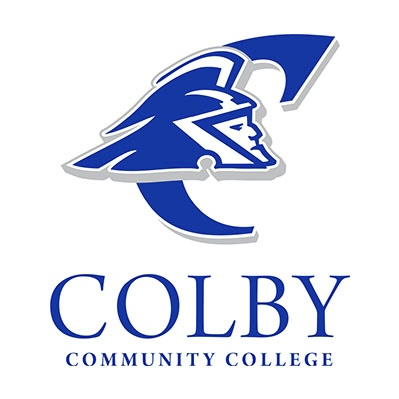
Permission for a one time reprint granted by © 2018 by the New York State School Music Association (NYSSMA®). All rights reserved.
It’s a new year! (It’s MID-year!) Your winter concerts are finished and you have worked hard to have and keep your students, families, colleagues and administration on your side.
You now know your students much better than you did at the beginning of the school year. You feel like you have a good idea of what your ensemble is capable of achieving and you are looking forward to all of your performances that will happen in the last months of the year. Now that you have carefully selected your music, here are some quick tips you might consider for your continued success.
Plot out each rehearsal
Do not be afraid to literally put a time cap on each section, as opposed to just writing down the name of each piece or section you’d like to rehearse that day. Better yet, give a willing student the responsibility of helping you stay on time. He or she will look at your whiteboard and if it says: Meadowlands 11:30-11:42, will know to stop you at 11:42.
Record the rehearsal
Using an iPad, if you have one, or even a phone, is a great way to record and hear what is actually happening in the rehearsal. Yes, one would argue that the sound quality will not be fantastic, but you will be able to hear missed key signatures, rhythms and dynamics. You can also play this for your group. They will quickly be able to hear sloppy attacks, releases or articulations.
Video record yourself conducting
This is a dreaded one! However, if you find that you’re conducting too much, or too little, these are easily fixed. By just being aware of what you’re doing, you can help “clean up” your conducting quickly. This will make it easier for the kids to know exactly what you are asking them to do. (And perhaps this will help you if you are frustrated with your students’ attention to detail! Maybe it is your conducting!)
Fix internal rhythm
Have the kids tap one foot. (If you prefer, they can toe tap in their shoe.) Are they able to count out loud AND clap while tapping their feet? I find some can clap OR count, but not both. I also find that sometimes while they are playing, students will be able to keep their foot tapping until the key changes or the notes are in an unfamiliar range and then they stop. This is a strong indication that there is more work to be done.
Can the kids write out the rhythms and put them in the appropriate spots in each measure? If you have students who put a 1 under every quarter note, or who count four sixteenth notes like eighths, you can quickly determine how to help those students with their performance and (future) sight-reading.
Have the students play their parts and speak out loud when they have a rest, literally with their instrument in their mouth. Sometimes kids will say “Rest” but you can make it even more precise by having them say “three” if that is where the rest falls.
This is especially helpful in mixed meter or when a student is counting multiple rests. It is fun, especially with little kids, to have a conversation with their instrument in their mouths. Of course, this works much better on a trumpet, than a clarinet, but can still be done!
Mini performances
Have a beloved non-music-teacher come into the rehearsal as a reward to the band. If appropriate, help educate that teacher beforehand so he or she will know how to comment on what he or she hears. This is a wonderful way to show other colleagues “what you do” in school! Have a music teacher come into the rehearsal from a lower grade level. For example if you teach high school, have the middle school teacher come in. The kids LOVE this and it is also fun for the middle school teacher to see his or her former students and hear the progress they have made.
Hold a pre-festival or pre-performance day. Have colleagues from your district (or a respected district) who have retired, come into your building and take notes on a performance. What is better than having 30+ years of expertise at hand?
Class assignments
Draw a class “road map” on the white board. You have the score, so you know what is happening, but your kids only have their music. Help encourage kids to raise their hands and “offer” dynamics, musical details (accent marks, crescendos, tenutos,) etc. They might not know that while they have a crescendo, another group has a decrescendo. This is especially helpful for the robust, overblowing trumpet and alto sax players!
Do the students understand melody, countermelody, ostinato and accompaniment? I love to ask the kids to play the melody. I hear all sorts of parts! Eventually, the melody is played, but it is a great gauge for me to see that some kids do not understand or know what the melody is.
I heard a great analogy once. The teacher said that the melody is like the sweatshirt. I can see the sweatshirt. It’s the most visible or, perhaps, brightest part of the outfit. The rhythmic ostinato, or accompaniment, is like the socks. I know you have them on, but I can’t see them! This should hopefully help address dynamics, balance and sometimes even blend.
Assign a listening assignment. Have the kids hear a professional recording of what you are currently playing. Ask them to write why the recording is better than your band. Yes, it’s a professional group and the kids will be quick to point that out. But why do they sound better specifically? If anything, you want them to get “that professional sound” in their ear.
I have the kids listen to the piece three times. On their paper, they can write what they hear or you can give them musical prompts. When they come into school the following day, the hope is that the professional group’s sound is still in their ear. We play better when we know and copy beautiful sounds.
Hold a Fun Friday, Wacky Wednesday, or Terrific Tuesday. Have your students sit next to different people, and ideally, different instruments. The kids will be able to hear different parts. Maybe, they’ll also, for a brief moment, be uncomfortable without their current stand partner. This will let them know (and you) what parts they need to practice more to feel secure. (It’s also a great teachable moment to introduce chamber music: one person on a part.)
You know your ensembles better than anyone and you will make the best choices for them. Some of these techniques (plotting out each rehearsal, recording the ensemble, videotaping yourself, fixing internal rhythm, giving mini performances, and holding class assignments) will be helpful for your next spring concert or festival evaluation.














